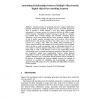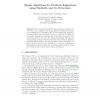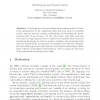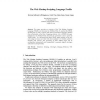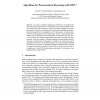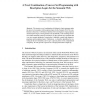ESWS
2007
Springer
14 years 7 months ago
2007
Springer
Many semantic portals use faceted browsing, where the facets are based on the underlying indexing ontologies of the content. However, in many cases, like in medical applications, t...
ESWS
2007
Springer
14 years 7 months ago
2007
Springer
Discovery is a central reasoning task in service-oriented architectures, concerned with detecting Web services that are usable for solving a given request. This paper presents two ...
ESWS
2007
Springer
14 years 7 months ago
2007
Springer
While tags in collaborative tagging systems serve primarily an indexing purpose, facilitating search and navigation of resources, the use of the same tags by more than one individu...
ESWS
2007
Springer
14 years 7 months ago
2007
Springer
Annotea provides an annotation protocol to support collaborative Semantic Web-based annotation of digital resources accessible through the Web. It provides a model whereby a user m...
ESWS
2007
Springer
14 years 7 months ago
2007
Springer
In this paper we propose an approach to semantic matchmaking that exploits various knowledge representation technologies to find most promising partners in peer-to-peer e-marketpl...
ESWS
2007
Springer
14 years 7 months ago
2007
Springer
Abstract When creating Semantic Web data, users have to make a critical choice for a vocabulary: only through shared vocabularies can meaning be established. A centralised policy p...
ESWS
2007
Springer
14 years 7 months ago
2007
Springer
Abstract. Ontologies are now used within an increasing number of realworld applications. So far, significant effort has been spend in building tools to support users in creating,...
ESWS
2007
Springer
14 years 7 months ago
2007
Springer
This paper provides an overview of the Web Mashup Scripting Language (WMSL) and discusses the WMSL-Profile. It specifies the HTML encoding that is used to import Web Service Descri...
ESWS
2007
Springer
14 years 7 months ago
2007
Springer
In an open, constantly changing and collaborative environment like the forthcoming Semantic Web, it is reasonable to expect that knowledge sources will contain noise and inaccuraci...
ESWS
2007
Springer
14 years 7 months ago
2007
Springer

